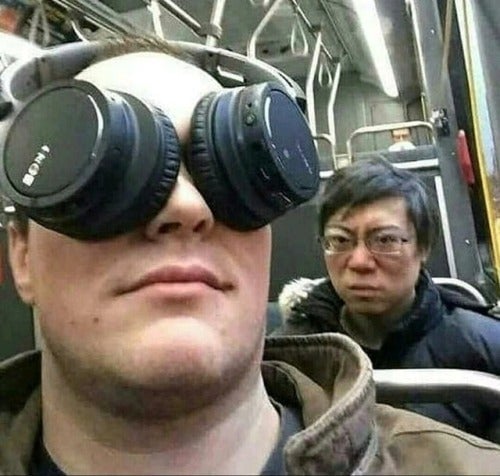Combination of line width, layer height and speed is what limits your hottend, not the nozzle size
Wanted to reply to another comment, but its saying that language is not alliwed lol
Larger nozzles do kick ass. I personally use my 0.6 nozzles pretty heavily. As others have mentioned though, there are definitely scenarios where you’ll really want or even need to drop to a smaller size. My printer hates trying to print PETG at higher sizes for example, maybe my hot end isn’t powerful enough.
it also consumes way more filament- especially on single-wall parts or parts that have x perimeters rather than a perimeter thickness. They’re great for structural prints, and large prints that you want done quickly. For comparison, a .4mm nozzle will have a nozzle area of about 0.125 mm^2, where a 0.6mm is .28 mm^2. and .8mm is .502mm^2. More than double the extrusion width.
like basically everything else in 3d printing, it’s all about compromise and which compromises are acceptable.
No, I don’t agree with consumes ‘way more’ filament.
If your design calls for 1mm width wall. You’re doing two passes with a 0.4 nozzle (0.5 width x2) or one pass with a 0.8 nozzle (1 width x1)
It’s the same plastic.
You’ll use more plastic on the infill, but you could arguably use a lower % infill if the infill wall thickness is larger.
So you could be using more plastic overall, but I don’t think it would qualify as ‘way more’… maybe like 10% to 20% more.
10-20 % comes out to $3-6 extra for the same parts across a 2kg reel. For parts that are structural or large (and not meant to be seen, or will be post processed anyway,) the advantages in strength and speed could be worth it.
But, that 3-6 adds up significantly over time.
I do agree that .6 and .8mm nozzles have a place in anyone’s kit. I don’t agree that this excludes .4mm or smaller nozzles from a similar place
It’s all about finding the right balance.
Tell us about your hotend?
Pretty simple - Microswiss metal hotend with the Minimus cooling system - 2 5015 fans and all removable with no screws, it just pops right apart and I can get to the hotend in seconds. I switched the fans to JST connectors one day I’ll do the same for the heater/thermistor with something like an xt30 for the heater. One day I’ll get around to it
Ever try 1.0?
Ever try 1.0…
On weed?Wow! That’s awesome! What additional modifications were needed?
Goodbye, filament money! Good grief do big prints chew through supply.
3d printer go brrrrrrrrrrt
I tried .8 nozzle for a while, but my vanilla hot end just can’t keep up at higher speed.
Wow! That’s awesome! What additional modifications were required?
as @rambos said, line width, layer height, and speed. I’m still working on getting the speed up - not that anything has failed on me just worried my hotend won’t keep up and haven’t tested max volumetric flow yet
Until you need to print something small and accurate that is. I had to build a second 3d printer to be able to do that even with just a 0.6mm nozzle on mine. Though I might have gone just a bit too far to the other end.
Also 0.8mm nozzles need quite the hotend to be usable. The standard Creality hotend would struggle to do 0.3mm layers at 50mm/s, and even a V6 would max out at around 0.4mm layers.
question… how are you dealing with extrusion pressure on the tiny nozzle? I tried going to a .2mm and found my printer didn’t like the nozzle pressure. at all.
I’m not so sure about that. I have gone all-metal (and bimetallic) on my 3V2 for the, uh. The bit connecting the heater to the heat sink. The HEATBREAK. Right. But the heater block, sensor, heat sink are all original and they have absolutely no problem with 1.0mm, at least up to 220. I’ve done various power measurements and it’s not having to work hard to do it, either.
The other changes I’ve made to the hot end assembly have been adding more cooling, not more heat. (It’s dual fan now and has better airflow to the heatsink.)
I mean, it could all be due to the bimetallic heatbreak. But, well… 1.0mm is 100% absolutely fine on my 3V2.
So. speaking of cooling… I’ve been floating an idea around for a bit now. Ever play with an airbrush kit (like for painting minis?)
hear me out here. Imagine setting up a plennum pressure chamber fed by an airbrush compressor, then using servos or something to control conic plug valves (as in the airbrush itself.) Now, imagine something similar to a bowden tube running to the hot end from said plenum chamber… directing the air exactly where you want it.
seriously, most the weight of the hot end is now in fans. At least, for me. (heater cooler, nozzle cooler, the other nozzle cooler.)
Imagine how fast we could get with bowden-air… (yeah, I’ll have to work on that name…)
I printed some tiny but detailed board game pieces recently, I don’t think I’d get the detail I wanted with a 0.8. I also have Revo installed so I’m okay with swapping nozzles frequently.
For years now, I’ve always want to see someone try a dual nozzle setup. Same material, same filament, but two nozzles sizes.
Small nozzle for outer perimeter at a low layer height.
Large nozzle for inner perimeter and infill at higher layer heights.
Maybe in the future, someone will find a way to control nozzle size dynamically.
Dang, I have .8s for all my hotends but haven’t got around to trying them. Some day though.
Thanks for the motivation.
When you have big shit to print try it, I’ve cut 20h parts down to 9h








